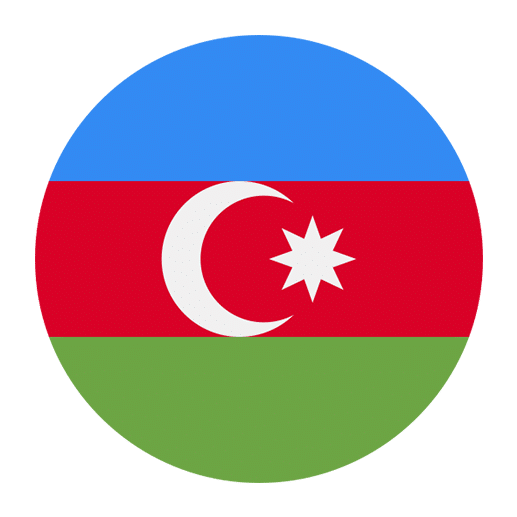Learning Azerbaijani can be an exciting journey, especially as you delve into its grammatical structures and vocabulary. One of the intriguing aspects of Azerbaijani is how it handles nouns and their various forms. A prime example of this is the difference between “dağa” and “dağı.” Both words are related to the noun for “mountain,” but they serve different grammatical functions. In this article, we’ll explore these differences in depth, providing you with a comprehensive understanding of how to use “dağa” and “dağı” correctly in Azerbaijani.
The Basics: Understanding “Dağ”
To start, let’s get to know the root word “dağ.” In Azerbaijani, “dağ” means “mountain.” Like in many languages, the root form of a noun can be transformed to express different grammatical relationships.
Case System in Azerbaijani
Azerbaijani, like many other Turkic languages, uses a case system to indicate the grammatical role of a noun in a sentence. The main cases you need to know are:
1. **Nominative**: The subject of the sentence (the base form).
2. **Genitive**: Possession or belonging.
3. **Dative**: The indirect object or the direction towards something.
4. **Accusative**: The direct object.
5. **Locative**: The location.
6. **Ablative**: Movement away from something.
The forms “dağa” and “dağı” are specific to the dative and accusative cases, respectively. Let’s explore each in detail.
“Dağa” – The Dative Case
The dative case in Azerbaijani is used to indicate the direction towards something, often translated into English as “to” or “towards.” When you want to express motion towards a mountain, you use “dağa.”
Example Sentences:
1. Mən dağa gedirəm. (I am going to the mountain.)
2. Onlar dağa dırmaşırlar. (They are climbing the mountain.)
In these examples, “dağa” indicates the direction towards the mountain. Notice how the ending “-a” is added to the root word “dağ” to form the dative case.
Formation of the Dative Case
The formation of the dative case in Azerbaijani involves adding the suffix “-a” or “-ə” to the noun, depending on vowel harmony rules. For “dağ,” the appropriate suffix is “-a,” resulting in “dağa.”
Vowel Harmony: Azerbaijani uses vowel harmony, meaning that the vowels within a word harmonize to be either front or back vowels. This affects the suffixes added to the word. Since “dağ” contains a back vowel (a), the suffix “-a” is used.
“Dağı” – The Accusative Case
The accusative case in Azerbaijani is used to indicate the direct object of a sentence, often translated as “the” in English. When you want to specify the mountain as the object of an action, you use “dağı.”
Example Sentences:
1. Mən dağı görürəm. (I see the mountain.)
2. O, dağı çəkir. (He/She is drawing the mountain.)
In these sentences, “dağı” identifies the mountain as the direct object of the verbs “see” and “draw.” The ending “-ı” is added to the root word “dağ” to form the accusative case.
Formation of the Accusative Case
The formation of the accusative case in Azerbaijani involves adding the suffix “-ı,” “-i,” “-u,” or “-ü” to the noun, depending on vowel harmony rules. For “dağ,” the appropriate suffix is “-ı,” resulting in “dağı.”
Vowel Harmony: Just like with the dative case, vowel harmony plays a crucial role in determining the correct suffix. Since “dağ” contains a back vowel (a), the suffix “-ı” is used.
Comparing “Dağa” and “Dağı”
Understanding the differences between “dağa” and “dağı” is crucial for mastering Azerbaijani grammar. Here’s a side-by-side comparison to help solidify your understanding:
1. **Dağa (Dative)**
– Indicates direction towards the mountain.
– Formed by adding the suffix “-a” to “dağ.”
– Example: Mən dağa gedirəm. (I am going to the mountain.)
2. **Dağı (Accusative)**
– Indicates the mountain as the direct object.
– Formed by adding the suffix “-ı” to “dağ.”
– Example: Mən dağı görürəm. (I see the mountain.)
Practical Exercises
To help you practice, here are a few sentences where you can fill in the blanks with either “dağa” or “dağı”:
1. Biz _________ baxırıq. (We are looking at the mountain.)
2. Onlar _________ tərəf qaçırlar. (They are running towards the mountain.)
3. O, _________ rəsm edir. (He/She is painting the mountain.)
4. Mən _________ qalxıram. (I am climbing the mountain.)
Answers:
1. Biz dağı baxırıq. (We are looking at the mountain.)
2. Onlar dağa tərəf qaçırlar. (They are running towards the mountain.)
3. O, dağı rəsm edir. (He/She is painting the mountain.)
4. Mən dağa qalxıram. (I am climbing the mountain.)
Common Mistakes and Tips
When learning the differences between “dağa” and “dağı,” learners often make a few common mistakes. Here are some tips to avoid them:
1. **Confusing Direction and Object:**
– Remember that “dağa” is used for direction (to the mountain), while “dağı” is used for the object (the mountain).
2. **Vowel Harmony:**
– Pay attention to vowel harmony rules. The suffix must harmonize with the vowels in the root word.
3. **Context Clues:**
– Use context clues from the sentence to determine if the noun is indicating direction or the object of an action.
4. **Practice Regularly:**
– Regular practice and exposure to native Azerbaijani speakers will help reinforce these grammatical structures.
Conclusion
Mastering the use of “dağa” and “dağı” is a significant step in your journey to learning Azerbaijani. Understanding these grammatical nuances will not only help you construct sentences more accurately but also enhance your overall comprehension of the language. Remember to pay attention to context, vowel harmony, and the role of the noun in the sentence. With practice, these concepts will become second nature, and you’ll be well on your way to fluency in Azerbaijani. Happy learning!

